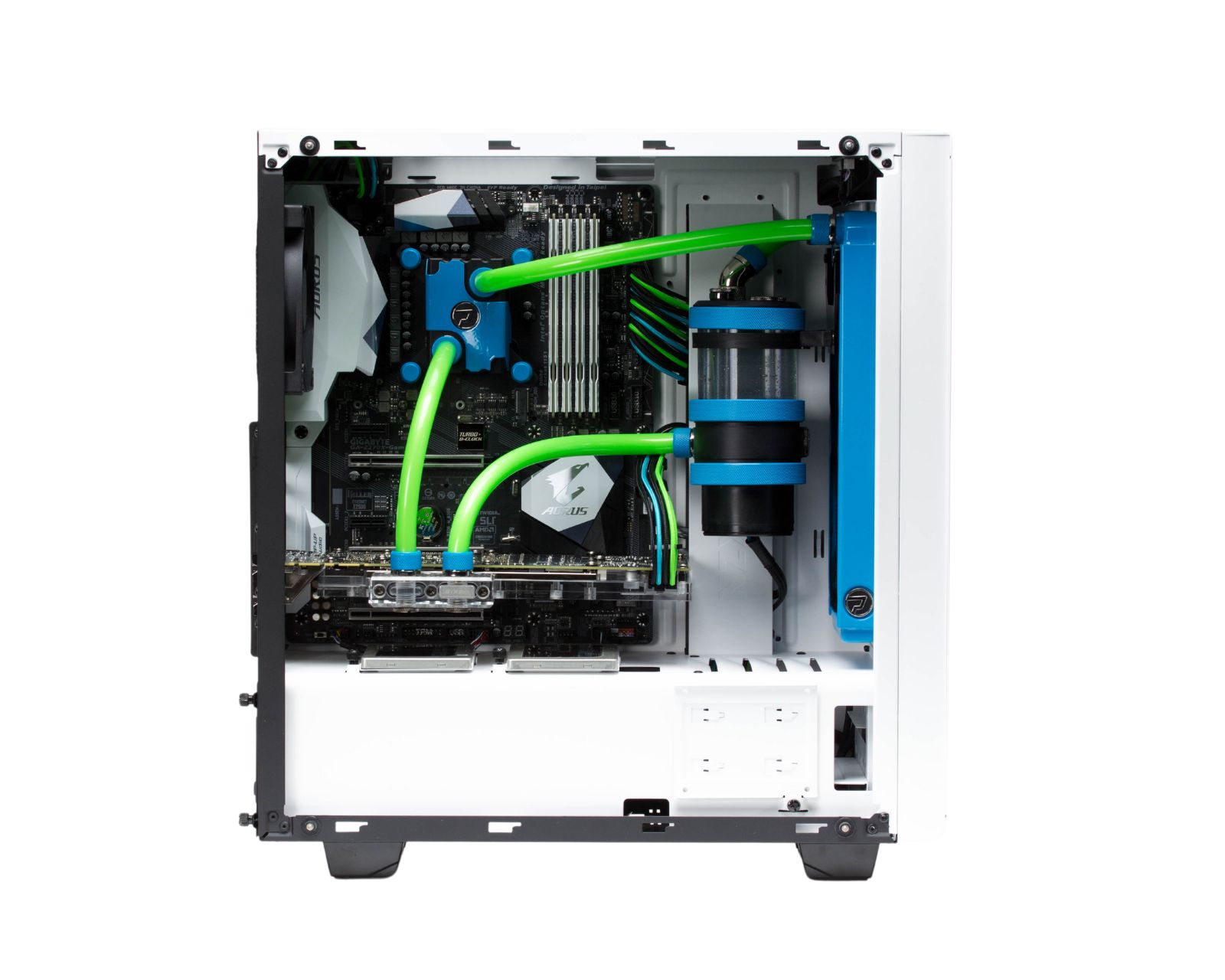For your PrimoChill cooling system, choose between the sleek precision of rigid tubing and the adaptable ease of flexible tubing.
One pivotal decision when embarking on the custom watercooling journey for your prized computer setup is the choice of tubing. The battle between rigid and flexible tubing is more than just an aesthetic choice—it's about performance, ease of installation, and long-term maintenance. This comprehensive analysis compares rigid versus flexible tubing to help you make an informed decision that aligns with your watercooling needs and preferences.
What Is Custom Computer Watercooling?
Before we dive into tubing types, let's understand what custom computer watercooling is. It's a cooling method that uses a liquid to transfer heat away from computer components like CPUs, GPUs, and sometimes RAM or VRMs, to keep them running at optimal temperatures. This is crucial for enthusiasts looking to overclock their hardware or for anyone wanting a quieter and more efficient cooling solution than standard air cooling.
The Contenders: Rigid vs. Flexible Tubing
Flexible Tubing:
Pros:
- Easier to install, especially for beginners.
- More forgiving with mistakes or layout changes.
- Generally more affordable than rigid tubing.
Cons:
- Can be prone to kinking, which restricts flow and efficiency.
- May absorb more heat compared to rigid tubing.
- Less aesthetic appeal for some builds.
Rigid Tubing:
Pros:
- Offers a clean, professional look that enhances the aesthetic of your build.
- Typically provides better flow due to its smooth interior.
- Less prone to heat soak, potentially improving cooling performance.
Cons:
- More challenging to work with—requires precise measurements and bending.
- Higher initial cost for materials and necessary tools.
- Less forgiving if the system layout needs to be altered.
Installation Comparison:
Installing flexible tubing can often be as simple as cutting to length and attaching it with the appropriate fittings. Rigid tubing, on the other hand, requires careful planning, cutting, and bending. For newcomers to custom watercooling, flexible tubing might be the way to go. However, those who seek a challenge and a polished look might prefer the rigidity of hardline tubing.
Performance and Maintenance:
While both tubing types will effectively cool your system when properly installed, rigid tubing is less likely to degrade over time and generally maintains a consistent flow rate. Flexible tubing might need more frequent inspections to ensure it hasn't softened, kinked, or become obstructed.
Aesthetic Presence:
Undeniably, rigid tubing can turn a powerful PC into a work of art. The clean lines and reflections of the liquid within can create a stunning visual display. While more subtle, flexible tubing can still contribute to a sleek look, especially with colored coolants.
Conclusion:
The choice between rigid and flexible tubing in a custom watercooling setup often comes down to personal preference, skill level, and the value placed on aesthetics versus ease of use. Both options have their merits and can provide excellent cooling results. Consider your priorities, budget, and willingness to tackle the learning curve of rigid tubing before deciding. Whichever path you choose, the result is a cooler, more efficient, and potentially quieter system that's uniquely yours.



